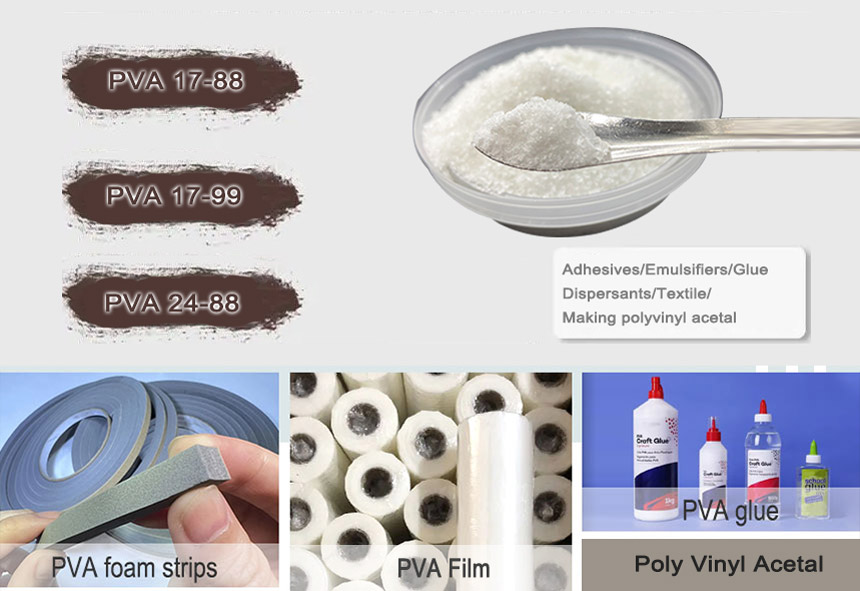Polyvinyl alcohol Resin is also called Poly Vinyl Alcohol Resin, PVOH, PVA. PVA Resin comes in various classifications, each serving specific purposes and industries. It is a soluble resin widely utilized in textile pulp, adhesives, construction, and other sectors. Moreover, PVA can be modified to create films, such as degradable mulch film and fresh-keeping film, making it eco-friendly due to its natural degradation.
Two essential indicators of PVA are the degree of polymerization and the degree of alcoholysis, with classifications like 17-99, 20-99, 23-99, and more. For instance, 17-99 signifies a polymerization degree of 1700 and an alcoholysis degree of 99%. Depending on the characteristics, PVA can be categorized into flocculent and flake (granular) types.
Higher polymerization degrees1 result in greater solution viscosity, while lower alcoholysis degrees2 enhance low-temperature solubility. PVA variants with lower polymerization and higher alcoholysis are commonly used in textile pulp, while others are employed as protective colloids for water-based adhesives or construction adhesives, like the well-known 107 and 801 construction glue.

Among iSuoChem's top-selling models are PVA 17-88, PVA 17-99, and PVA 24-88.
Polyvinyl alcohol 17-88, also known as PVA 1788, exhibits interesting properties. Its aqueous solution viscosity gradually increases over time at room temperature, except when the concentration reaches 8%, at which point the viscosity remains stable. The unique characteristic of PVA is its excellent film-forming ability, making it highly resistant to most gases except water vapor and ammonia. Moreover, PVA possesses good light resistance, rendering it unaffected by light exposure. It can burn in an open fire, emitting a distinct smell. The aqueous solution of PVA may sometimes become toxic during storage, although it is non-irritating to human skin.